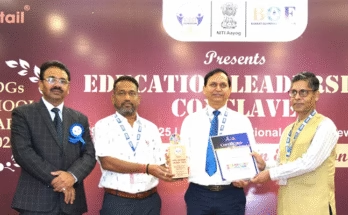 by Ashis Sinha
by Ashis Sinha
RNS: Indian Institute of Technology Madras (IIT-M) researchers have developed a portable device made of 3D paper that can detect adulteration in milk in just 30 seconds. Even at home, you may administer the test. It’s sensitive enough to pick up a wide variety of adulterants, such as urea, detergents, soap, starch, hydrogen peroxide, sodium-hydrogen-carbonate, and salt, stated a press communiqué.
This new device can evaluate the purity of liquids like water, fresh juices, and milkshakes for a reasonable price, unlike the time-consuming and costly procedures employed in the lab in the past. The sample size for testing for adulterants in liquids is extremely small, at only one millilitre.
Research was led by Dr. Pallab Sinha Mahapatra, Associate Professor, Department of Mechanical Engineering, IIT Madras, along with Research Scholars Subhashis Patari and Dr. Priyankan Datta.
Elaborating on the functioning of this paper-based device, Dr. Pallab Sinha Mahapatra, Department of Mechanical Engineering, IIT Madras, said, “The 3D paper-based microfluidic device is made up of a top and bottom cover and a sandwich structure middle layer.”
“This 3D design works well for transporting denser liquids at a consistent speed. The paper is treated with reagents and is let to dry. Both paper layers are adhered to both sides of the support after drying, and the covers adhere with double-sided tape. Whatman filter paper grade 4 is used in this design, which aids liquid flow and allows for the storage of more reagents,” it stated.
“All the reagents are dissolved either in distilled water or in ethanol, depending upon their solubility. Using colorimetric detection techniques, all the adulterants are detected in different liquid samples,” added Dr Mahapatra.
“It is inferred from the investigation that the reagent only reacts with the specific adulterant in this method and not with any milk ingredients. Hence, this analytical tool can help monitor liquid food safety, thereby increasing the traceability of tainted milk in remote areas of developing countries.”



